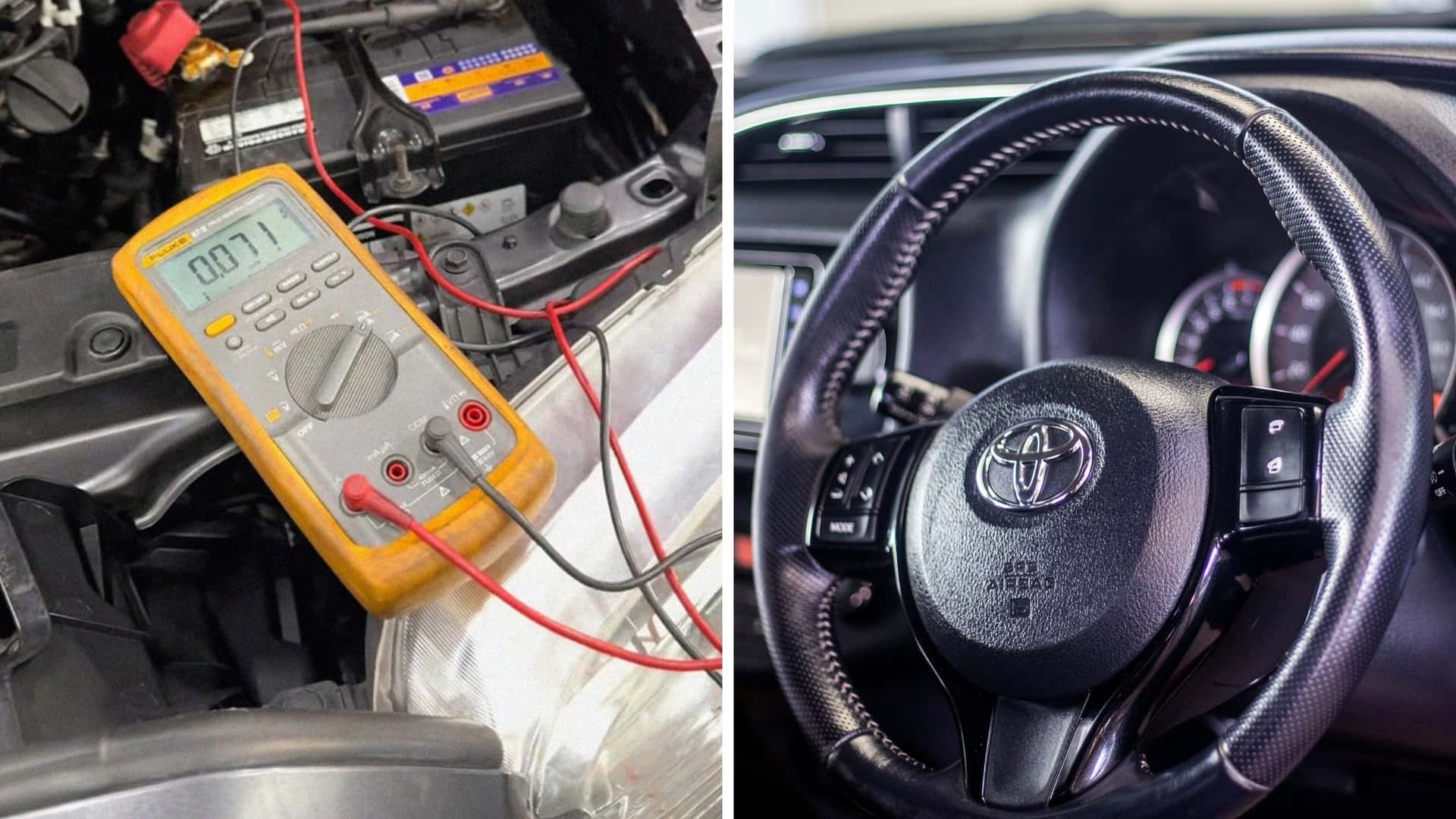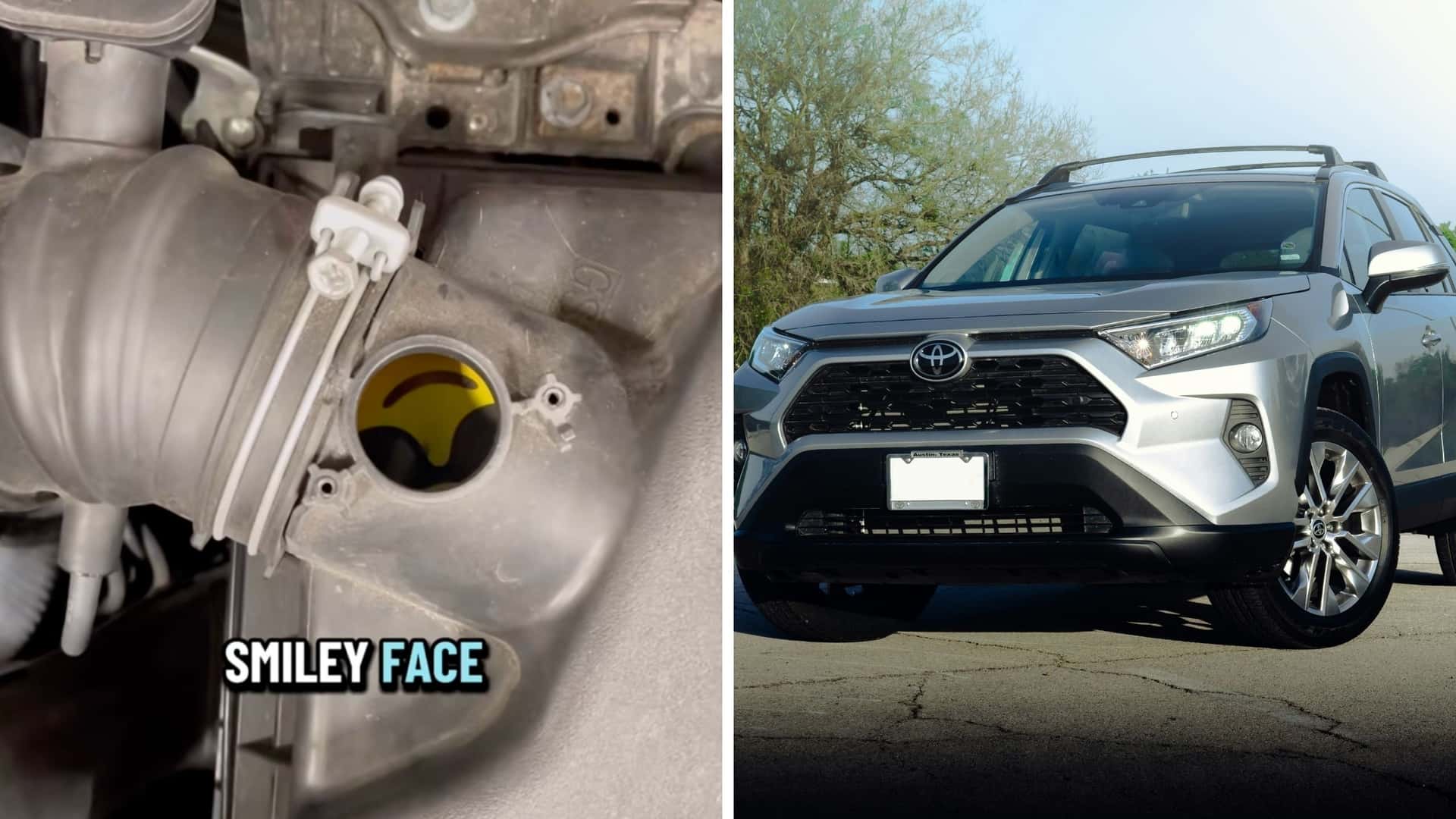
Every good mechanic loves a mystery. For one Toyota tech, the case started with a truck that kept eating batteries and a note that read: “Customer believes tire sensor causing drain.” What he uncovered instead was pure 21st-century irony.
The TikTok clip from Toyota technician Austin (@thatyotaguy1) opens with him having just solved a mystery that’d been causing the owner of a Toyota Tacoma plenty of time, money, and frustration. After replacing three dead batteries in a year, she took it to Austin with her own hunch about what was wrong.
“This lady is saying that her tire pressure sensor is causing her to have a parasitic draw,” he says in the video that’s been seen more than 265,000 times. “One of the first things I noticed when I shut the truck off is that I had a blinking light flashing against my leg.”
Mechanic Plays Automotive Detective
When he traced the flashing light, Austin found the real culprit was a small Bluetooth dongle plugged into the truck’s OBD-II diagnostic port. The device, commonly used for scanning engine codes or syncing with insurance-tracking apps, was staying powered even after the ignition was off. In other words, it was drawing a small but steady current from the battery 24 hours a day.
“Almost immediately as soon as I walked around to the front of the car, it was already under 50 milliamps,” he explained in the clip. “So I think it’s safe to say that dongle being left in this vehicle is in fact the reason it had a parasitic draw, and not the tire pressure sensors.”
For anyone who’s ever struggled with a mysteriously dead battery, Austin’s test will sound familiar. What he performed is known as a parasitic draw test, a common diagnostic procedure in auto repair shops and one that’s often the last resort after new batteries and alternators have already been swapped out. A healthy modern vehicle should draw no more than 50 milliamps (0.05 amps) when turned off, that’s enough to keep the clock, alarm, and keyless entry system alive, but not enough to drain the battery overnight.
FROM THE TRENDING NEWS DESK
Viral bits from across the social media landscape
Our team of experts tracks what's trending so you don't have to—from viral videos to online debates that have everyone talking.
When something like an aftermarket accessory, faulty relay, or glovebox light stays on, that number can spike well past 100 milliamps. Left unchecked, it can flatten a fully charged battery in just a couple of days. Even factory components can fail to “go to sleep,” particularly in newer cars with complex electronic networks that may take up to 30 minutes to shut down completely after the key is removed.
Toyota vehicles, including the Tacoma in question, have built-in systems to manage that power draw. But as Toyota’s own service bulletins note, plugged-in devices that draw from the OBD-II port can bypass those sleep modes entirely. In Austin’s case, once he unplugged the dongle, the test current immediately dropped to normal resting levels, confirming the problem.
The irony isn’t lost on anyone who’s used those gadgets. Many drivers leave Bluetooth OBD scanners or insurance trackers plugged in permanently, unaware that they pull current even when parked. A study by AAA found that battery-related failures remain one of the most common causes of roadside breakdowns, particularly in vehicles that sit unused for long periods. In some cases, the cause was something as small as an aftermarket LED light strip or USB charger quietly siphoning power.
Gallery: 2020 Toyota Tacoma








New Tech Can Kill Batteries
As vehicle electronics have grown more sophisticated, so has the potential for these “phantom loads.” The average new car now contains more than 100 microprocessors, all of which communicate through modules that draw current even at rest. That’s why auto experts advise disconnecting or removing accessories when a vehicle won’t be driven for several days, or using a battery maintainer to keep voltage stable.
The tire-pressure misdiagnosis might sound funny, but it’s a good reminder of how hard it can be for drivers to distinguish between mechanical and electrical symptoms. When a vehicle struggles to start, the most obvious assumption is a bad battery, not a background process quietly feeding on it. According to YourMechanic, the only reliable way to confirm a drain is with a multimeter and time, allowing each circuit to settle while watching for abnormal amperage readings.
Beyond the technical details, Austin’s follow-through shows the value of methodical testing rather than just swapping parts. In the end, the solution took only minutes: unplug the dongle, re-run the test, and verify that the current had dropped back to normal. The customer, presumably, can keep her new battery, and her old tire sensors, for quite some time.
Motor1 reached out to Austin via direct message. We’ll be sure to update this if he responds.
We want your opinion!
What would you like to see on Motor1.com?
Take our 3 minute survey.- The Motor1.com Team














































